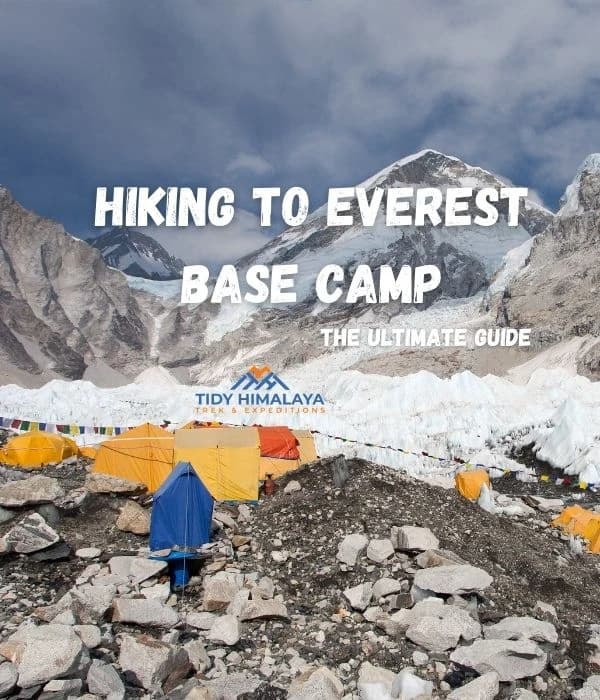Everest has been the pride and identity of Nepal for centuries. Sagarmatha National Park UNESCO World Heritage Site, is located in the Khumbu Valley. Trekking to Everest Base Camp is more than just a journey.
It's a destination that passes through different small settlements, showcasing its unique culture and lifestyle. Before reaching the iconic base camp, trekkers walk past different viewpoints: Everest View Hotel, Tengboche monastery, Kala Patthar, Gokyo Ri, Chokung Ri viewpoint, and Thukla pass.
Located at the heart of the Khumbu region, it offers different landscapes and cultural remarks. Visit the six best Everest viewpoints before reaching the iconic Everest Base Camp.
The Everest region is a huge area, and choosing the Best viewpoint of Everest Base Camp can be exhausting. Here are some places that offer the perfect viewpoint of Everest's beauty.
1. Everest View Hotel

In the Everest region, the Everest View Hotel is a well-liked off-road trek destination. With a height of 3880 meters (12730 ft), it is the highest hotel in the world. It is recognized by the Guinness book of World Records and loved by millions of hikers for its unique structure and architectural design.
Walking past the rugged train and climbing stone steps for hours leads you to the hotel, where you can witness the views of Mount Everest and the surrounding Himalayan peaks from every room.
The hotel isn’t very big compared to the city’s hotels. However, it offers wifi,solar-powered showers, dining room services, a mini bar, and local cuisine. It’s the perfect hotel for the trekkers who want to experience in a luxurious in the Himalaya. It features 12 rooms, which have 2 suites and 10 standard rooms.
The best views of the 360-degree vistas of Ama Dablam (6,812 meters/22,349 ft) Thamserku (6,623 meters / 21,729 feet), Lhotse (8,516 meters / 27,940 feet), Baruntse (7,129 meters / 23,389 feet), Island Peak (Imja Tse) (6,160 meters / 20,210 feet) and the iconic Mount Everest (8,848.86 meters / 29,031.7 feet) are March through May and September through December.
2. Tengboche monastery
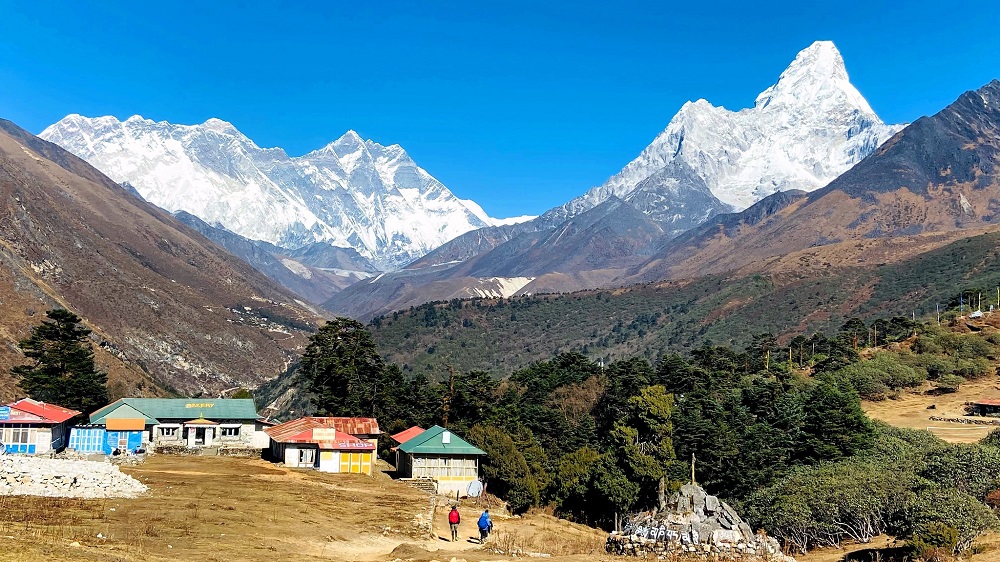
Located at an altitude of 3867 meters, Tengboche monastery is the largest gompa in the world.
Despite being destroyed by an earthquake and fire, it still stands tall in the UNESCO World Heritage Site area. With national and international help, the monastery was structured into a big, spacious hall carefully designed with stone blocks.
This Tibetan Buddhist monastery is the final point that links ten holy places—monasteries, caves, and hermitages—around Namche Bazaar and beyond. The Sherpa, who arrived from Tibet approximately 600 years ago, take great pride in Tengboche.
Each year, Tengboche monastery hosts the Mani Rimdu Festival. It’s celebrated between October and November, which is also the best time for trekking in Nepal. Hikers can participate in the festival and witness the religious dance, rites, songs, and colourful vibrant colours.
3. Kala Patthar

There is a black rock in the Khumbu region called Kala Patthar. It is situated about 1.5 kilometers southwest of Everest Base Camp, beneath the tiny community of Gorakshep.
The trek to Kala Patthar is renowned for the most stunning views of Mount Everest and its neighboring peaks like Lhotse, Nuptse, and Pumori. The views get dramatic when the sunrise falls on the snow-capped mountain, imitating the different shades of colours in the sky.
Kala Patthar can be reached by Gorak Shep or Pheriche. The trek is longer from Pheriche (4240 m). The trail is challenging, and the altitude gain is significantly harsh for inexperienced hikers. The trek from Pheriche to Kala Patthar and back can take approximately 7 to 8 hours in total.
Gorak Shep, the final town before EBC, is usually where the climb to Kala Patthar starts. Although the hike is difficult and steep, particularly at the high elevations, technical climbing skills are not necessary. In order to see the breathtaking Himalayan illumination, trekkers frequently try to reach the summit at sunrise or sunset.
4. Gokyo Ri

Located at a height of 5357m, Gokyo Ri is one of the top-rated trekking destinations of the Everest region. The trail goes through the same route as the classic Everest base camp. Gokyo Ri is a remarkable blend of lakes, mountains, hills, monasteries, prayer flags, and the unique culture and tradition of the Sherpa.
It is a combination of six lakes: Gokyo Cho (Dudh Pokhari), Thonak Cho, Ngozumpa Cho, Tanjung Cho, and Longabanga Cho. It showcases the centuries-old unity of both Hindu and Buddhist cultures and traditions.
The Gokyo Ri summit will reward you with the views of a mountain crossing over 8000 meters. Everest (8848 m), Lhotse (8156m), Cho Oyu (8201m), and Makalu (8463m). When the golden light of the sunrise falls on the tranquilizing lake, it exhibits the magical scenery of the snow peaks reflecting in the lake.
5. Chhukung ri view point

Chhukung Ri is a rocky peak situated in the Khumbu region at a height of 5546m. It's a vital resting point for the trekkers attempting to hike to Everest Base Camp and Island Peak.
It's almost a three-hour off-road trek, the trails are remote, and most of the villages are unexplored. The trail condition of Chhukung Ri is challenging and harsh for the beginner hiker. You walk past the stone-built walls, desert-like hills, and 360-degree views of the mountain, no matter where you are.
After walking for hours through the rough terrain, the trek rewards you with a close-up view of Imla Tse (6189m), Ama Dablam (6812m), Lhotse, and Nuptse peaks covered in snow. During the peak autumn season, Makalu (8545m) and Cho Oyu(8188m), and Ngozumpa Glacier can be seen in the far distance.
6. Thukla pass

Thukla Pass, also known as Dughla Pass, is nestled between Dingboche and Lobuche in the Everest region at an elevation of 4,830 m (15,846 ft).
During the trek, Khumbu Glacier, Nuptse, Pumori, and Lhotse are the main highlights on your way to Everest Base Camp. Away from the bustling teahouse settlements, Thukla Pass offers an unforgettable sense of privacy where the only sounds are the distant glaciers and the wind. The sunrises and sunsets illuminating the peak of the Himalayas are a showstopper. The atmosphere shifts from the icy trails to the deserts.
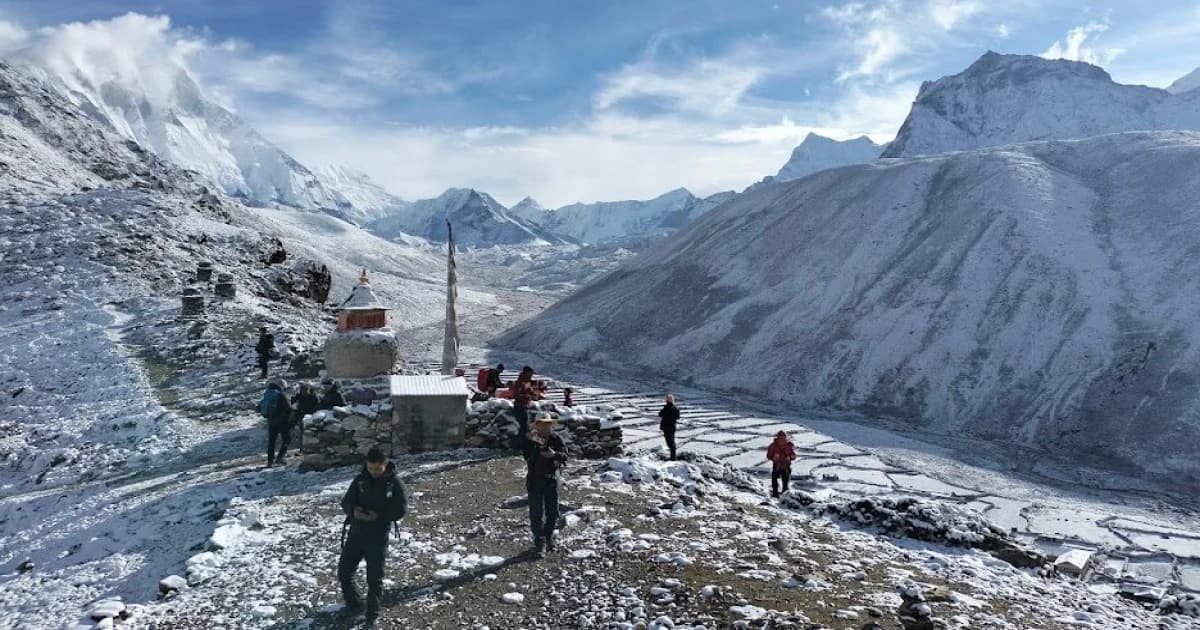
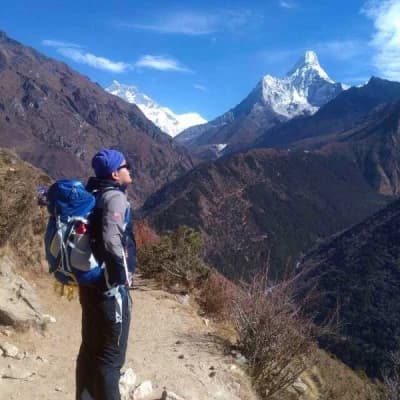
.webp&w=1200&q=75&dpl=dpl_2PwU5ZDv8uoJ3KrzEVbz8N547HgX)
-(600-x-450-px)-(1200-x-675-px)-(600-x-450-px)-(1).webp&w=1200&q=75&dpl=dpl_2PwU5ZDv8uoJ3KrzEVbz8N547HgX)
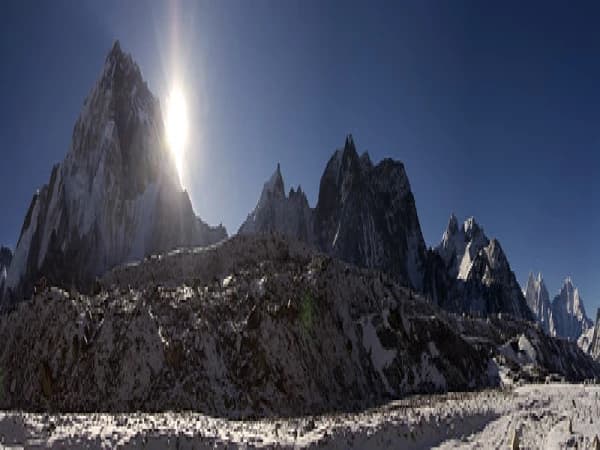
-(600-x-450-px)-(1200-x-675-px)-(600-x-450-px)-1.webp&w=1200&q=75&dpl=dpl_2PwU5ZDv8uoJ3KrzEVbz8N547HgX)
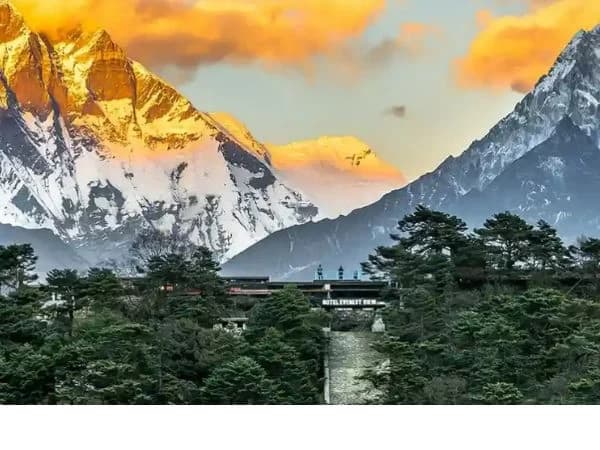
-(600-x-450-px)-(1200-x-675-px)-(1200-x-675-px)-(600-x-450-px).webp&w=1200&q=75&dpl=dpl_2PwU5ZDv8uoJ3KrzEVbz8N547HgX)
.webp&w=1200&q=75&dpl=dpl_2PwU5ZDv8uoJ3KrzEVbz8N547HgX)
.webp&w=1200&q=75&dpl=dpl_2PwU5ZDv8uoJ3KrzEVbz8N547HgX)
